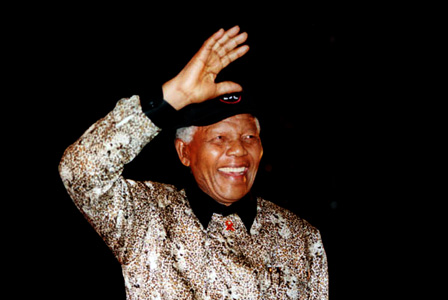
PRETORIA – Sooner or later the news will break that Nelson Mandela has died, and the frenzy whipped up by the media about ‘what will happen next’ will resume. The news of his passing and the obituaries are already written and recorded. In many cases eulogies have already been presented, and new ones will be made as soon as the looming announcement is made.
Mandela’s condition is variously described as improving, steadily improving, serious but stable, and responsive to treatment. He is receiving the best that the world class South African private health care system can provide, as the Heart Hospital specialises in intensive care and life support. But the fact that he’s there and not in one of the other hospitals that he’s been treated at underscores the seriousness of his situation.
Thousands of messages, drawings, posters and photos from Mandela’s masses of admirers decorate the outer walls of the hospital. It’s a moving scene of spontaneous feeling amidst the indifferent roar of city traffic. Many of the messages are from schools and youth groups, written by children for whom his time in prison and momentous release are distant legends. People bring their families to visit the place, lay flowers or write their greetings.
In a world singularly lacking in inspiring, visionary and uncorrupted leaders, Mandela seems to be needed more than ever. Though he has been out of the public eye for several years, his authority as a reconciler, peacemaker and champion of the oppressed still resonates, both in South Africa and around the world.
The intense veneration that surrounds Mandela is being stoked and pumped for all its worth by most formal areas of South African society.’Follow Mandela’s legacy’ is the logo flashed up on public broadcaster TV channels. The streams of TV advertising between programmes are laden with references to the former African National Congress leader, with exhortations to be like Madiba (the clan name that has morphed into an affectionate sobriquet).
In 2009, the UN General Assembly declared July 18th, Madiba’s birthday, as International Nelson Mandela Day. The theme of this year was ‘Take action, Inspire Change, Make Every Day a Mandela Day.’ And the emphasis of this year’s Mandela Day was on food security, shelter and literacy. “Overcoming poverty is not a gesture of charity,” he had said in 2005. “It is an act of justice.”
‘A Celebration – The Man & The Icon’, was the headline on the cover of the South African edition of Reader’s Digest in July, not a magazine renowned for celebrating revolutionaries. Inside there was a reprint of an old interview with Madiba, highlighted by quotes from Bill Clinton, Bono and others. “Mandela is the closest thing the world has to a secular saint,” said Time magazine’s managing editor Richard Stengal.
How are we to disentangle all this from the reality that Mandela represented in his long career as a liberation fighter? The secular sainthood bestowed on him now, and inevitably all the more so in the coming period, is a soft-focus image of a smiley old man dishing out platitudes about inspiration and motivation.
Mandela Day and the image of Mandela we are constantly fed seem to be all about charitable good deeds, or smiling and laughing with Princess Diana, another secular saint. Unwittingly perhaps, and keen to keep Mandela its own, Madiba’s lifelong political home, the African National Congress, is happy to promote this cheesy image. And yet Mandela never saw the war on poverty, or on HIV-AIDS, for instance, as having anything to do with charity. It was far more about social justice.
The mountains of glossy Mandela coffee table books, or pocketbooks of anodyne ‘inspirational’ Madiba quotes promote a schmaltzy iconography that tends to displace the more arresting accounts in the biographies or autobiographies of Mandela’s comrades – people such as Joe Slovo and Mac Maharaj, both leading Communist Party members before and after the banning of the party in the early 1950s.
As SACP general secretary in the early 1990s, Slovo was Mandela’s minister of housing in South Africa’s first democratically elected government, inaugurated in 1994. Slovo – the unfinished autobiography of ANC leader Joe Slovo gives a penetrating insight into Mandela’s political development.
Initially, in his student days and as a young activist, he was very anti-communist, and aligned to the nationalist liberal-bourgeois mainstream of the early ANC. Mandela was known for heckling communists at ANC meetings – “heckler and disrupter in chief,” as Rusty Bernstein later recalled. Later, Slovo found that Mandela’s political understanding of Marxism and the history of the communist movement had deepened markedly.
Mandela’s great teacher and role model was Walter Sisulu, an immensely influential communist and ANC leader. It was Sisulu more than anyone who shaped the ANC’s allegiance with the communist party (the party was first called the Communist Party of South Africa (CPSA), and then after it re-launched itself underground in 1953 the South African Communist Party (SACP).
Mandela, Sisulu and Oliver Tambo established the youth wing of the ANC in 1944, and represented a new generation of young leaders who gave the ANC a more radical direction. This became particularly crucial following the formal creation of apartheid after 1948, when the ultra-right wing and white supremacist National Party took power.
Some of the best accounts of this era are in Mandela’s much sold but little read Long Walk to Freedom, and Padraig O’Malley’s Shades of Difference: Mac Maharaj and the Struggle for South Africa.
The increasing militancy of the ANC and the broader Congress movement, which encompassed other population groups that were oppressed by the apartheid government, eventually led to the realization by Mandela, Sisulu, Tambo, Slovo and other leaders that armed action had to be incorporated into the ANC’s tactics and strategies.
Mandela’s great contribution to the ANC as a leader in the 1950s was to turn the movement in favor of armed struggle. He was the first commander in chief of Mkhonto we Sizwe (MK), the armed wing of the ANC , formed following the Sharpeville massacre in 1961. “For almost three decades,” he recalled in 1993, “our army and people were compelled to engage in a war of the disadvantaged against the privileged, a slow but intense war of attrition.”
SACP leader Chris Hani in addition to Slovo led MK, after the 1963-64 Rivonia trial -so-called because of the location where the banned ANC strategized for armed action. The trial aimed to decapitate the ANC, imposing life sentences on 10 ANC leaders, including Mandela, mainly for their activities in the armed struggle. Mandela was the only one of the Rivonia prisoners who was not a member of the SACP central committee.
The history of all this is available from the books, speeches and other publications that one can download from www.anc.org.za the website of the ANC. This, plus the various accounts still available, presents a rounded portrait of Mandela as a political leader whose ideas and actions were rooted in revolutionary traditions.
The SACP was instrumental in shaping the course of ANC policy up until the early 1990s, and the input of communist thinking was key to the movement’s regeneration and momentum.
Before the Mandela Miracle and the Rainbow Nation of 1994, the ANC’s chief champion on the world stage was the Soviet Union and its allies. The West – the U.S. Britain, France, West Germany and others – routinely opposed sanctions against the apartheid regime and labelled the ANC and Mandela as terrorists. Without the support of the Soviet Union it is unlikely that the ANC would have managed to wage the level of struggle it did during the years of exile and underground operations.
Mandela never wavered in his respect for the SACP its role in South Africa or sought to distance the ANC from it when opportune. “It is special,” he said of the SACP’s place role in 1995, ” because of the critical role the party has played in our country’s history, because of its relevance to today’s politics; and because it is bound to make an impact on the future of our society.”
He also believed strongly in the Alliance, comprising the ANC, SACP and the trade union confederation COSATU, which remains a core institution in South Africa’s political landscape.
As he mentions in his autobiography, he differed from communists in his belief that class antagonisms could be reconciled, but he saw in them crucial and dependable allies in the liberation struggle.
In the years immediately after his release from prison and the unbanning of the ANC, the SACP and other organizations, the National Party government under FW De Klerk sought to cripple the ANC and sever its links with the SACP in a mass of covert and semi-covert ways.
Using a loose clandestine network of security operatives and right-wing elements, it promoted violence between supporters of Inkatha Freedom Party leader Mangosutho Buthelezi and the ANC, and thousands of other random killings and attacks.
Mandela condemned the regime for playing a double game of being in talks with the ANC in the Conference on a Democratic South Africa, but all the while stoking violence throughout the townships. He and SACP leader Chris Hani had worked together closely, and toured the country together to urge peace making in communities.
He saw the urgent need to foster reconciliation, not only to tackle the violence affecting the country, but also in order to narrow the divisions that apartheid had created between the population groups. Doing so was the key to gaining the stability needed to sustain any sort of democratic future.
Hani’s assassination in April 1993 put South Africa on the verge of civil war. Mandela put all his efforts into calming the situation, wholly eclipsing De Klerk in moral authority and gravitas. A white assassin had murdered Hani, a point the ANC leader used astutely:
“A white man, full of prejudice and hate, came to our country and committed a deed so foul that our whole nation now teeters on the brink of disaster. A white woman, of Afrikaner origin, risked her life so that we may know, and bring to justice, this assassin.”
Mandela set the course for reconciliation needed to sustain the democratic transformation – the National Democratic Revolution (NDR), beginning with the country’s first ever democratic elections. The South African ‘miracle’ and the ‘rainbow nation’ were born, and with them much of Mandela’s global kudos.
But Mandela’s iconic status owes much to his role as a team player and disciplined ANC cadre. That he became the symbol of the struggle and the worldwide campaign against apartheid was a conscious decision of the ANC leadership imprisoned on Robben Island or in exile.
Once he was released he frustrated many an interviewer by rooting his motivation for his part in the struggle in the decisions and orientation of the ANC and the liberation movement, and not in some one-man crusade steeped in the aura of personal charisma.
And yet it is the latter view that prevails. Outside the ANC and the Alliance, Madiba is rarely depicted in his political context. Conservative politics in South Africa and elsewhere opportunistically use his image and stature to draw a negative distinction between him and the current ANC.
And in the mass media and popular culture we tend to get an apolitical, toothless Madiba devoid of revolutionary identity, and wholly at odds with his views on fighting social injustice. Worse, there is the unseemly squabbling among some of his family over the use of his name, and more recently the money grubbing cretinism of the Being Mandela reality show, featuring two of his granddaughters.
For the school children and other youngsters who come to the Heart Hospital in Pretoria to paste a ‘get well’ message to Madiba and have their photo taken alongside his portrait, his life and example have much to offer that is dynamic and revolutionary. Far more so than the sentimentalized, branded and saintly figure being propagated in his twilight days.
Photo: Wikipedia



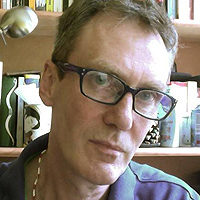
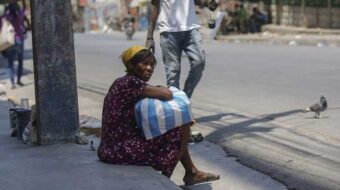
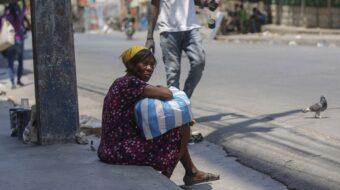
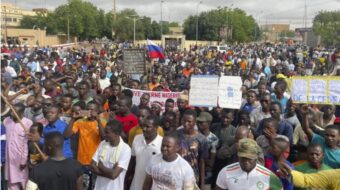





Comments